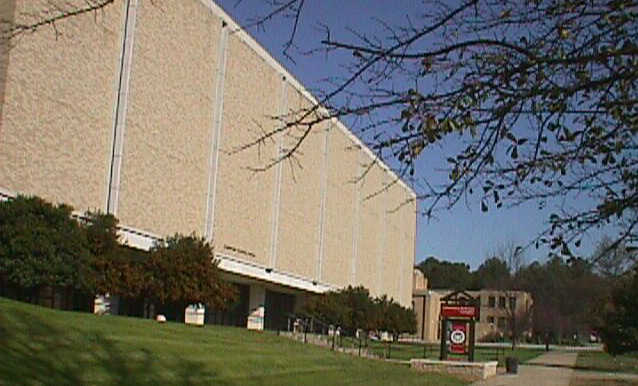
Department of Chemistry
 |
Department of Chemistry and
Physics
|
| CHEM1023 |
Exam 2 Solutions; Thermochemistry
|
Note: Only the questions have been listed to save space. Points total over 100 points since Thermochemistry was combined with the solutions section.
1. Draw a typical solubility plot. Label all parts including where saturated, unsaturated and supersaturated solutions would be on the plot. (10 points)
2. Describe positive deviation from Raoult's Law in terms of intermolecular forces. (10 points)
3. Explain why gases are less soluble at higher temperatures when liquids and solids are generally more soluble at higher temperatures. (6 points)
4. Explain how adding a nonvolatile solute always lowers the vapor pressure. (6 points) Be brief.
5. Define colligative property and give two examples. (8 points)
6. Draw a plot of energy vs. reaction coordinates for the making of a solution from two liquids showing exothermic mixing. (6 points)
7. Briefly explain why the DH is endothermic for the separation of solute molecules when making a solution. (6 points)
8. What is Henry’s Law? What two common gases do not follow Henry's Law in water? (8 points)
9. In osmotic pressure, define the following terms: isotonic, hypotonic, hypertonic, semipermeable membrane. Give the equation for osmotic pressure. (10 points)
10. What is meant by miscible and immiscible? "Like dissolves like"? (6 points)
11. What factors are important for favorable solution formation? (6 points)
12. Define DHsoln. What is the sign of DH for an endothermic process. Define endothermic process. (8 points)
13. How do you prepare a supersaturated solution? (4 points)
14. Define molality. How do you calculate freezing point depression? (6 points)
15. Define entropy. (4 points)
16. Define a spontaneous process and give an example. (4 points)
17. Using the table provided, calculate the Free Energy for the equation
below. Is the
reaction spontaneous or nonspontaneous? (12 points)
CH4 (g) + 3 Cl2 (g) --------> CHCl3 (g)
+ 3 HCl (g)
DGfo
CHCl3 (g)
-70.4 kJ/mol
CH4 (g)
-50.8 kJ/mol
Cl2 (g)
0 kJ/mol
HCl (g)
-95.3 kJ/mol
18. Give the equation that relates DGo
and K. If K = 7.0 x 103, is the reaction
spontaneous? (5 points)
19. State the three Laws of Thermodynamics. (9 points)
First -
Second -
Third -
20. Write the formula for the change in the Gibbs Free Energy related
to enthalpy and
entropy. For the reaction of A + B ------> C + D, if DS
is positive and DH is negative, what
is the sign of DG? What information can
you say about this specific reaction based on the
thermodynamic parameters (DS, DH,
DG)?
(10 points)
21. Predict whether the reaction has a positive or negative value for DS. (6 points)
DS
a) N2H4 (l) + 2 H2O2
(l) ------> N2 (g) + 4 H2O (g)
______
b) Al(OH)3 (s) + 3 HCl (g) ------> 3 H2O (l)
+ AlCl3 (s)
______
c) 2 NaHCO3 (s) ------> Na2CO3 (s)
+ CO2 (g) + H2O (l)
______